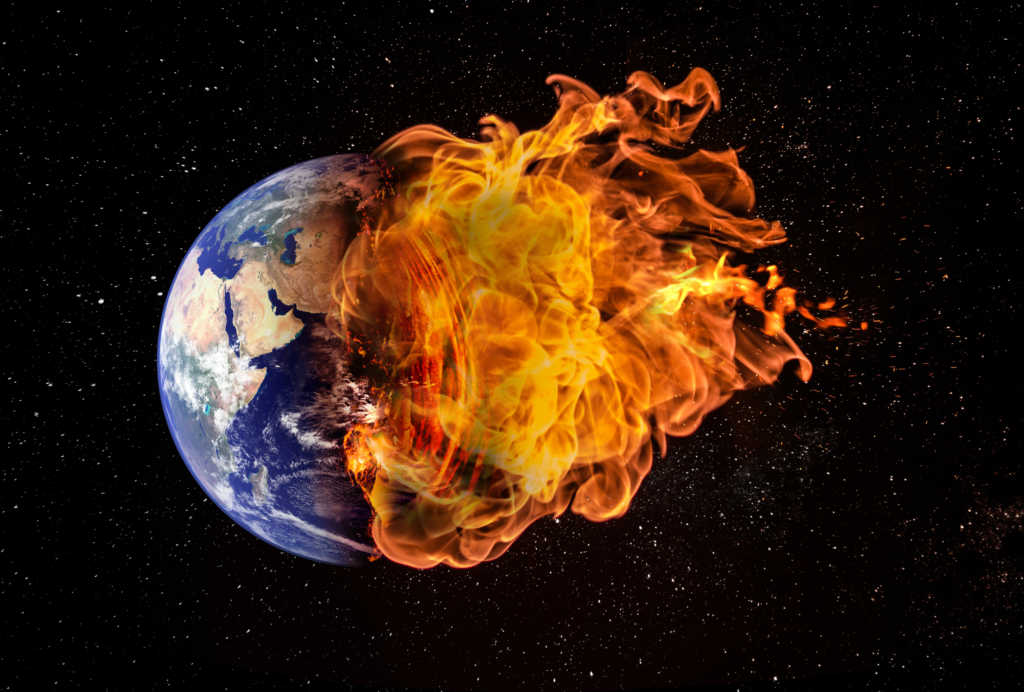For the first time in decades, scientists have set the so-called “Doomsday Clock” just “two minutes to midnight.”
If this statement seems a bit unclear or murky to you, you’re not alone. But, considering that the “clock” has been trending throughout the day, perhaps you’d like a simple explanation surrounding what in the world it is and why the proximity to midnight is such a dire problem.
The symbolic “clock” is actually an annual report released by the Bulletin of the Atomic Scientists, an organization that works to inform the public “about threats to the survival and development of humanity from nuclear weapons, climate change, and emerging technologies in the life sciences.”
SAS has more about the history behind its famed clock:
Founded in 1945 by University of Chicago scientists who had helped develop the first atomic weapons in the Manhattan Project, the Bulletin of the Atomic Scientists created the Doomsday Clock two years later, using the imagery of apocalypse (midnight) and the contemporary idiom of nuclear explosion (countdown to zero) to convey threats to humanity and the planet. The decision to move (or to leave in place) the minute hand of the Doomsday Clock is made every year by the Bulletin’s Science and Security Board in consultation with its Board of Sponsors, which includes 15 Nobel laureates. The Clock has become a universally recognized indicator of the world’s vulnerability to catastrophe from nuclear weapons, climate change, and new technologies emerging in other domains.
Thus, hitting “midnight” on the clock would mean Armageddon and immense catastrophe had struck. We’re not quite there yet, but, unfortunately, considering the insanity that has unfolded on the world’s stage over the past year, the clock has ticked ever-close to that marker.
From North Korea’s ongoing nuclear threat to the continued stalemate between the U.S. and Russia as well as Pakistan’s and India’s increasing nuclear arsenals, the report indicates that international issues are so bad that they’re collectively as dangerous as they were around the time of World War II. The clock is, in fact, the closest it’s been to midnight since 1953 when the hydrogen bomb was tested, USA Today reported.
See the 2018 Doomsday Clock Statement: https://t.co/ST3D8oi2L3 pic.twitter.com/Ofucv3DFqD
— Bulletin of the Atomic Scientists (@BulletinAtomic) January 25, 2018
Global warming is also a major concern, with the report urging everyone to come together to avoid “catastrophic temperature increases.”
“The year just past proved perilous and chaotic, a year in which many of the risks foreshadowed in our last Clock statement came into full relief,” BAS president Rachel Bronson said in a statement. “In 2017, we saw reckless language in the nuclear realm heat up already dangerous situations and re-learned that minimizing evidence-based assessments regarding climate and other global challenges does not lead to better public policies.”
Bronson went on to warn that there is a nuclear arms race that is heating up — one that could be calamitous.
BAS offered up a variety of potential solutions that could help turn the clock back. Among them, it recommended that “U.S. President Donald Trump … refrain from provocative rhetoric regarding North Korea, recognizing the impossibility of predicting North Korean reactions.”
Additionally, the report urges the U.S. and North Korea to hold talks, for the U.S. to honor the Iran agreement, for Russia and the U.S. to come to peaceful standing and protect against the misuse of technology, among other measures.
“Humankind has invented the implements of apocalypse,” the report warns, while also offering up some hope. “So can it invent the methods of controlling and eventually eliminating them.”
Read the report for yourself here.



